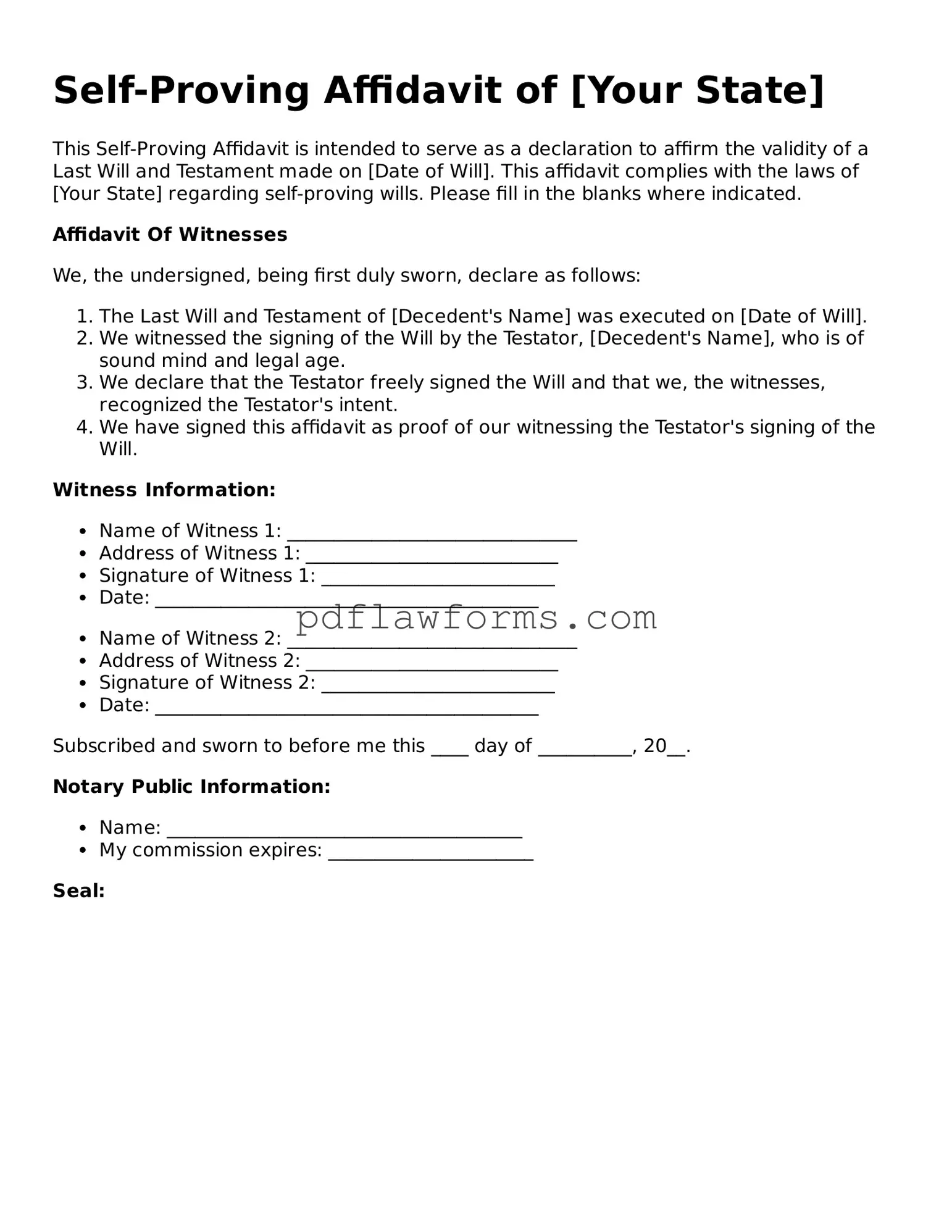Filling out a Self-Proving Affidavit form is a crucial step in the estate planning process. However, many individuals make common mistakes that can lead to complications later on. One frequent error is failing to sign the affidavit in the presence of a notary public. A notary's role is essential, as their acknowledgment adds a layer of authenticity to the document. Without this signature, the affidavit may not hold up in court.
Another mistake involves not including all necessary witnesses. Most states require at least two witnesses to sign the affidavit alongside the testator. Omitting a witness can invalidate the document. It is important to ensure that these witnesses are not beneficiaries of the will, as this could create conflicts of interest.
Many people also overlook the requirement for the affidavit to be dated. A date provides context and clarity regarding when the affidavit was executed. Without a date, questions may arise about the timing of the will's validity, potentially leading to disputes among heirs.
Additionally, some individuals fail to provide accurate information about the testator’s identity. This includes full names and any relevant identifying details. Inaccuracies can create confusion and may lead to challenges regarding the will's legitimacy.
Another common error is neglecting to review the entire document for completeness. Each section must be filled out thoroughly. Leaving blanks or providing vague information can result in misunderstandings or legal challenges down the line.
People often make the mistake of not keeping a copy of the signed Self-Proving Affidavit. Retaining a copy is vital for record-keeping and can serve as evidence of the affidavit's existence should any disputes arise. Without a copy, proving the affidavit's validity may become difficult.
Some individuals also fail to understand the specific requirements of their state regarding the Self-Proving Affidavit. Laws can vary significantly from one jurisdiction to another. Not being aware of these differences can lead to errors that could invalidate the document.
In addition, failing to communicate with the witnesses about their roles can create issues. Witnesses should be informed that they will be signing the affidavit and understand the significance of their signatures. Lack of communication can lead to confusion and potential refusals to sign.
Lastly, individuals sometimes rush through the process without seeking legal advice. Consulting an attorney can help ensure that all aspects of the Self-Proving Affidavit are completed correctly. Skipping this step may result in costly mistakes that could have been avoided.
